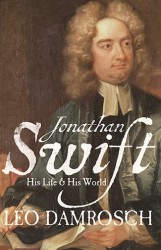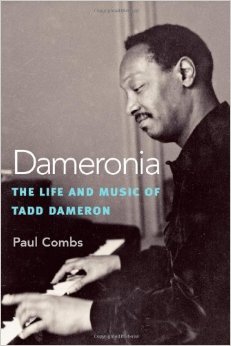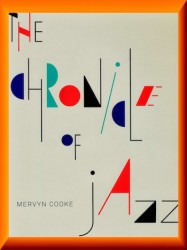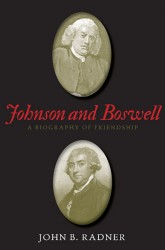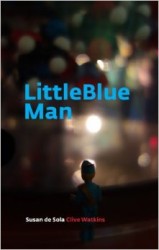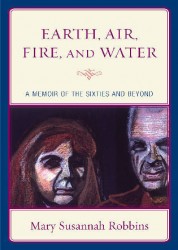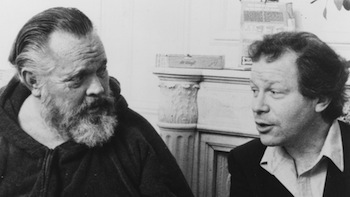The Annual Arts Fuse Holiday Gift Roundup — Tips From Enthusiasts
Wondering about what to give the arts and culture lover on your gift list? No problem—the sage writers for The Arts Fuse (with an assist from our readers) come to the rescue with thoughtful suggestions.
With gift season comes the existential quandary: What to give the culture lovers on your list? This season the writers for The Arts Fuse help fend off the crisis by recommending items that will delight the heart and stimulate the mind. Please feel free to add your own suggestions in the comments section.
This page will be updated as more selections come in . . . .
Happy Holidays,
Bill Marx, Editor
The Arts Fuse
2013 has been a banner year for books on the bebop era. Stanley Crouch published the long-awaited first volume of his Charlie Parker biography, and Bud Powell was the focus of both a sprawling but invaluable biography by Peter Pullman and a more analytical academic treatment of Bud’s music (and its context) by Guthrie P. Ramsey, Jr. (see Steve Elman’s reviews of both books).
Lost a bit in the shuffle–just like the artist himself–has been Paul Combs’s landmark biography, Dameronia, of composer/arranger Tadd Dameron. Innovative and influential, Dameron (more or less contemporaneously with Gil Evans) charted–literally–a new jazz ensemble sound. Combs has done yeoman work unearthing Dameron’s scores–including many that were never recorded or published, for which he supplies excerpts–and ferreting out numerous recordings where Dameron, sometimes invisibly, created stellar musical settings for vocalists, instrumental soloists, and other bandleaders’ ensembles. He also places Dameron’s work within the larger musical context of the rise of bebop and the transition to hard bop and beyond, where his concepts were carried forward by artists like Benny Golson. Published by University of Michigan Press, Combs’s exploration of Tadd Dameron will be a welcome and perhaps revelatory gift for the serious jazz buff in your life.
As with any year, 2013 saw the release of numerous new CDs (usually also available via electronic distribution and, increasingly, issued on vinyl as well). As you’re pondering a holiday gift of recorded jazz, here are a few exceptional releases that may have slipped by under the radar and that spent a lot of time in our CD player this year.
There aren’t that many recordings that inspire the sense that you’re listening to something authentically new and unexpected. Mozambican guitarist/composer/vocalist Albino Mbie is one of the freshest new voices on the jazz scene, and his CD Mozambican Dance displays the full range of his remarkable talent. Mbie’s subtly expressive singing (in Portuguese, English, and indigenous languages of Mozambique) and delicate melodies float effortlessly atop a rich web of cross-rhythms and diverse instrumental and vocal colors. “Infectious” doesn’t begin to describe this CD, which should delight anyone (especially fans of Richard Bona and Lionel Loueke) who loves the fusion of jazz and world music.
The mother-daughter team of vocalist Dani and pianist Debora Gurgel are not as familiar to American audiences as some other Brazilian jazz artists, but their reputation is deservedly growing, and their latest CD, Um (“one” in English), should go a long way in that direction. Joined by bassist Sidiel Vieira and drummer Thiago Rabello, the Gurgels traverse a program of impressive originals, from the opening Bach- and choro-inflected “36-47” to the moving remembrance of Brazil’s dark years of dictatorship, “Not To Be Heard”, as well as a couple of classics by Hermeto Pascoal and João Bosco, and a surprise that I’ll leave you to discover. Aficionados of Brazilian music should derive great pleasure from this wonderful CD. (Incidentally, Dani Gurgel is an accomplished photographer as well–check out her striking cover art.)
I’ve heard great Brazilian guitarists and great blues guitarists, but I’ve encountered almost no one who has convincingly made both styles their own. Well, meet Freddie Bryant, a virtuoso on acoustic 6- and 12-string as well as electric guitars, backed by the rhythm section of bassist Patrice Blanchard and drummer/percussionist Willard Dyson, who adeptly meet him on whatever musical turf he chooses to inhabit. In the crackling collection of live performances on his new CD, Live Grooves…Epic Tales, he’s joined on various tracks by tenorman Donny McCaslin, Cuban altoist Yosvany Terry, flutist Steve Wilson, and pianist Juan Galiardo, who journey with him from Rio de Janeiro to the South Side of Chicago, and even, on the opening track (“Drum On, Drum One”), to India. Bryant’s CD should put a smile on the face of any guitarist or guitar buff.
Finally, on the CD Black Orpheus bassist Nilson Matta, one third (with guitarist Romero Lubambo and drummer/percussionist Duduka da Fonseca) of the phenomenal Trio da Paz, steps out on his own to lead a stellar aggregation of musicians–including A-listers like vocalist Leny Andrade, clarinetist Anat Cohen, trumpeter Randy Brecker, and the incomparable Kenny Barron on piano–in a set that explores not only the universally beloved soundtrack from the classic film but also music from an earlier theatrical collaboration of Jobim with poet Vinicius de Moraes on the same subject, Orfeu da Conceição. This CD should be a delightful discovery for, well, any music-lover on your shopping list.
Incidentally, I’ve heard all of the above musicians in concert, and if your recipient likes the CD, I would encourage your friend or family member to catch these terrific musicians in live performance.
And for the gift-giver with deep pockets, a trip to the Mosaic Records website will yield a present that will knock any jazz enthusiast’s socks off. Memorable among their 2013 releases are essential compilations of restored recordings by drummer/bandleader Chick Webb (including many tracks with his youthful discovery, a vocalist by the name of Ella Fitzgerald) and pianist/bandleader Earl Hines, the first authorized release of bassist/composer Charles Mingus’s 1964-65 Jazz Workshop concerts, reissues of the complete Muse Records sessions by the great trumpeter/composer Woody Shaw, and an intriguing collection of sessions from 1968-69 that tenor saxophonist Clifford Jordan made for Stanley Cowell and Charles Tolliver’s Strata-East label.
— J. R. Carroll
Jeremy Denk, Goldberg Variations.
Denk is a genius. Literally: he was awarded the MacArthur Foundation’s prestigious distinction just around the time this album came out on Nonesuch. And the recording lives up to such an accolade. Throughout, Denk’s playing is impeccable, sensitive, and astute. There are plenty of dry, unmemorable accounts of the Goldbergs, but in Denk’s hands these variations live, breathe, sing, and sigh – perhaps an equal to the classic Gould accounts?
Christian Gerhaher, Mahler Lieder.
Since the premature retirement of the extraordinary Thomas Quasthoff a couple years back, several German baritones have stepped forward to fill the void. One of the most impressive is Christian Gerhaher, who, with Kent Nagano and the Montreal Symphony, this year released an account of the three orchestral song cycles by Gustav Mahler. There are many recordings already out there of these pieces from which to choose, but this disc stands out from the pack for the focus of the singing and the intensity of the orchestral playing – like I said in my Arts Fuse review, it “remind[s] you just what all the [Mahler] fuss was once about.”
Hanns Eisler, Songs and Franz Schubert, Erlkönig.
The other superb German baritone of the day is Matthias Goerne (BSO audiences recently got to hear him in Britten’s War Requiem) and he has been busy of late cutting records for Harmonia Mundi. The Eisler album is a revelation: gripping music by an important, if now largely forgotten, twentieth century composer that is performed with tremendous concentration. The Schubert disc, the fourth installment of a multi-volume series, is equally captivating and supremely musical in both the sensitivity of the singing and the brilliant accompaniment of pianist Andreas Haefliger.
Bartók, Violin Concertos.
This is one album of which I simply can’t get enough (and I own several recordings of both of these concerti). The extraordinary Isabelle Faust weaves a web of diaphanous lyricism is the First Concerto – the music simply floats as if in orbit – and brings prodigious character and grit to the Second (which closes with Bartók’s original – and superior – orchestral coda). These performances knocked my socks off the first time I heard them and continue to do so – no mean feat.
Attacca Quartet, Fellow Traveller.
This is the first album to bring together all of John Adams’ music for string quartet (to date), and it’s a doozy. There are three pieces: John’s Book of Alleged Dances (1994), the String Quartet (2008), and Fellow Traveller (2007), the first two of which have been recorded by, respectively, the Kronos and St. Lawrence String Quartets. The Attacca’s match those performances (which might well be regarded as definitive) note-for-note and up the ante with a raucous run-through of Traveller. Adams may not be as highly regarded for his chamber music as for his stage works, but this disc makes as strong a case for his music for string quartet as you’re ever going to hear. If I had to pick one recording as my Album of the Year, this would be the one.
Vores, Goback Goback.
BMOP/Sound has been stunningly busy this year, releasing (by my count) no less than eight new full-length albums of various (mostly living) contemporary composers. Of them all, I simply can’t shake Andy Vores’ Goback Goback, a beautiful, thoroughly haunting meditation on various stages of life, setting eight poems by W.S. Graham for voice and chamber orchestra (here sung with impeccable precision and musicality by David Kravitz). It’s coupled with two of Vores’ orchestral Fabrications that, together, give a wonderful sense of the composer’s wide-ranging musical influences and interests.
Tchaikovsky and Arensky, Piano Trios.
There are plenty of fine chamber groups on the scene today, but the Paris-based Trio Wanderer is in a class all its own. Last year, the group celebrated its twenty-fifth anniversary season and this year brought out a new recording of piano trios by Tchaikovsky and Anton Arensky. Both are spectacular pieces, brimming with unforgettable tunes and potent musical drama. They receive electrifying performances here, filled with fiery, passionate playing that calls to mind the best of the flawless Stern-Istomin-Rose Trio.
— Jonathan Blumhofer
One of my favorite ‘coffee table’ books this year is The Chronicle of Jazz by Mervyn Cooke (Oxford University Press). The lavishly illustrated volume casually — but classily — chronicles the history of the music from 1895 to the present via an array of eye-filling photos, a breakdown of each year’s major events, biographical factoids about the performers, and succinct explanations of stylistic and technological changes. In June of 1952 at Brandeis University Leonard Bernstein organized a Festival of Creative Arts that debated the conflict between bebop and traditional jazz idioms. The performers at the shindig included Charles Mingus, John Lewis, and Miles Davis. Who knew?
For the literary minded there have been a number of hefty biographies this year. A juicy and expansive chronicle from Yale University Press covers the life and loves of the eighteenth century English satirist Jonathan Swift. In Jonathan Swift: His Life and His World, Leo Damrosch commits himself to the goal of bringing Swift “to life as a complex, compelling human being. Hidden though he wanted his inner life to be, he was anything but a recluse. ‘He always appeared to the world in a mask,'” his godson Thomas Sheridan said, ‘which he never took off but in the company of his most intimate friends.’ But with them he did take it off, and they all testified to his magnetic personality and infectious playfulness. Listening to Swift’s own words, together with those of his wide circle of friends, we can form an intimate relationship with him.” And in this well-researched, reasonably speculative volume we get a vivid sense of an antic intellect, mordant and massive.
One of my hearty recommendations would have to be — with a warning — Johnson and Boswell: A Biography of a Friendship by John B. Radner (Yale University Press). For those who love the amazing duo this is a meticulously detailed (and analytically tough-minded) portrait of their fertile relationship, from the day they met in 1763 to when Boswell published his trail-blazing Life of Johnson. Radner perceptively dramatizes the psychological gamesmanship played by both men as they grew to trust one another: Boswell patiently winning, through a mix of genuflection and guile, the loyalty of an age-defying Johnson who could be suspicious and distanced, often too anxious to assert intellectual domination by way of verbal bulling. My reservation is that the scholarly volume stays in resolute close-up — the action moves along on a microscopic level. But for those fascinated by the nuances of male bonding, it is continually rewarding.
Ghost Train Orchestra‘s Book of Rhapsodies album is an impish excursion into the nooks and crannies popular music in the 1930s, filled with inventive, hamster-wheelie arrangements of the ingenious compositions of Raymond Scott, Alex Wilder, Reginald Foresythe, and others. This is delightful trip through a retro aural funhouse. For a sample, listen to “Beethoven Riffs On” below.
— Bill Marx
‘Tis the season for merchandise that declares in the morale-raising 1913 British posters “Keep Calm and Dance On,” but there are other gift options for dance lovers.
Ruth St. Denis based her dance exoticism on an image she saw promoting Egyptian Deities cigarettes, so perhaps it’s only fitting that vintage photos of Miss Ruth and Ted Shawn are now gracing coasters available from the Jacob’s Pillow store.
Cool graphics and hot moves on this b-boy themed tank top from the progressive folks at Cafe Press will make some dancer very, very happy.
For the Jewish Lucinda Childs fan, what could be better than the leather Sol LeWitt Yarmulke he designed for his temple in Connecticut? I kid you not. Picture below.
— Debra Cash
Some small (teeny) press books.
The Art’s Fuse’s own literary critic Susan de Sola Rodstein is also a wonderful photograph. She encourages a Little Blue Man, one of TV’s Thunderbirds who seems to be at loose ends, to wander in our world. Poet Clive Watkins keeps up as best as he can with the wee man.
Nemo Hill’s poems in his new When Men Bow Down are as much Where as When. Hill’s travels are both subject matter and setting for his serious observations of himself and others. Hill thinks as much as he feels.
While not a book published this year, the important dates regarding Mary Susannah Robbins memoir, Earth, Air, Fire, and Water, are the years she lived through. Surprisingly for a life story, the book satisfyingly replaces involvement with the delicacies of the writer’s own specialness with acute description of time, place, and people. Well worth reading.
Mary Meriam, who has been published by Nemo Hill’s Exot Press, has a new collection from her own press. Meriam’s formal inventions in Conjuring My Leafy Muse are sometimes open-heartedly obvious, sometimes hidden, in poems of sorrow, humor, and wonder.
— Marcia Karp
My Lunches With Orson, by Henry Jaglom with Orson Welles. Edited by Peter Biskind. (Metropolitan Books)
Henry Jaglom has long skirted around the periphery of Hollywood, acting and directing little seen films such as Can She Bake a Cherry Pie? and Festival in Cannes. But he struck gold when he brought a tape recorder when he sat down from 1983 to 1985 for lunches with Orson Welles. The great man gave his permission (as long as Jaglom kept the recorder was out of Welles’ sight). Tucked away in Jaglom’s garage after 30 years, these revealing conversations with Welles features him waxing expansively on film, acting, friends, enemies, his love of food, Hollywood, politics, and more. He was a bundle of contradictions. Like Kane himself, Welles’ experienced massive early success; he eventually found himself frustrated with the moviemaking business and life itself as he grew older. But his enormous ego and intelligence, unfettered, makes for entertaining and thoughtful reading.
Sleepless in Hollywood: Tales from the New Abnormal in the Movie Business by Linda Obst. (Simon & Schuster )
Obst, a producer who penned Hello, He Lied about her experiences in Hollywood, has written another quick read that offers plenty of insights into the movie business as it is today. She begins by distinguishing between ‘tentpole’ and ‘tadpole’ films. The former, anchored in franchises, have an unfair advantage against smaller independent films in an increasingly large and significant international marketplace. The latter can be made on the cheap and offer more substance, but they will be seen by far fewer people. Big ‘event’ driven films dominate the market and monopolize advertising. Television has become the place for innovation, as well as for greater story and character development. While much of this may be obvious to those with an interest in the film business, the industry perspective confirms what many already suspect — and help all of us understand where film production and distribution may be headed.
 Critical Mass by James Wolcott. (Doubleday)
Critical Mass by James Wolcott. (Doubleday)
Wolcott has been writing about American culture for decades, mostly for Vanity Fair, as well for the Village Voice, and The New Yorker. His writing style is marked by his jaunty turns of phrase and a talent for cutting to the heart of a subject. (To wit – his recent description of the late Peter O’Toole as, “slim, elegant, dandyish, like a figure out of a J. P. Donleavy novel who always seemed to have stepped out of an Irish countryhouse with an amused air of slow dilapidation.”) I’m bouncing around the book’s 490 pages of essays on television, comedy, rock, books, and movies and finding treasures everywhere.
Post Tenebras Lux, directed by Carlos Reygadas
The deliriously beautiful photography, striking images, and lush sound design more than justify buying this film on Blue Ray. That it was screened only briefly in Boston probably means you may have missed it. The plot’s poetic, enigmatic explorations of character and the human condition warrant multiple viewings. In Spanish. Here is the Arts Fuse review.
— Tim Jackson

